Author: Saurabh Deshpande, Crypto Researcher; Translation: Golden Finance xiaozou
Throughout history, money has served three key social functions. It is used as a store of value (wealth), a medium of exchange, and a unit of account. While the types of currencies have changed, their functions have remained largely the same. In general, there have always been two schools of thought - one that supports credit money or soft money, and the other that supports hard money. Credit money, like today's fiat currency system, is someone's liability.
The dollars or rupees you own are a liability of the government. If the government defaults, your money will not be able to buy necessities and services.
Hard money, on the other hand, refers to money that is not a liability of the government. For example, precious metals such as gold do not depreciate even if the government defaults. Instead, their value is enhanced by their perceived stability.
Bitcoin is the first digital currency to successfully implement non-sovereign hard money. In 2009, Satoshi Nakamoto released Bitcoin, just as the world was going through a global financial crisis due to bad lending practices and unilateral interest rate decisions that affected the money supply. The long-strength dollar depreciated by more than 95%. Ray Dalio, a staunch supporter of macroeconomics, wrote in his article "Paradigm Shifts" how central banks respond to various crises by lowering interest rates and the impact of crises on various economies.
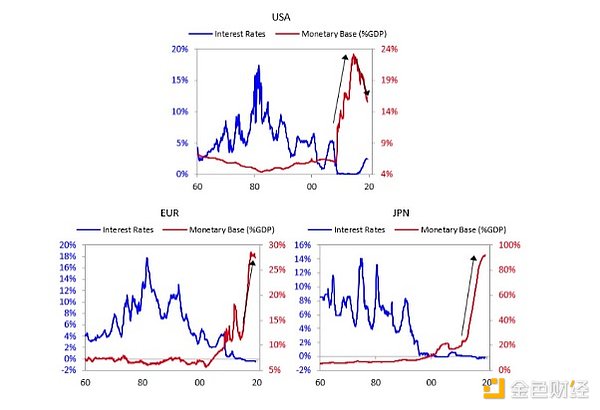
The above chart shows the decline in interest rates in developed countries since the 1980s. At the same time, the monetary base as a percentage of GDP is also growing. Therefore, the growth rate of total output cannot keep up with the growth rate of money supply. When the money supply grows rapidly, it can lead to higher inflation, higher living costs, more debt burdens, and greater income inequality, regardless of whether household income growth is lower. The high inflation environment we are currently in is a result of the policies adopted by central banks.
In this environment, precious metals (such as gold) stand out. Government intervention in the supply of gold is minimal. With less government influence, the supply of gold is more predictable than fiat currencies. This high predictability has allowed gold to maintain its value over decades and become a store of wealth.
Bitcoin was born as peer-to-peer electronic cash. Over the years, like many innovations, it has deviated (or at least expanded) from its original goal of electronic cash and evolved into digital gold.
In 2018, I came across the interesting metaphor of the "blockchain city". Blockchains are disconnected from the outside world and are more like closed islands. Each island has its own priorities and characteristics, reflecting its own technology and social structure. Bitcoin Island has always preferred security and decentralization over other aspects such as speed and programmability.
Decentralization is a broad term with nuances. Balaji Srinivasan proposed a way to measure decentralization by breaking down the blockchain into different subsystems, such as mining, clients, developers, exchanges, nodes, and ownership. He proposed that overall decentralization can be achieved by measuring the Gini coefficient and Nakamoto coefficient of the subsystems.
Many Bitcoin supporters, such as Jonathan Bier, believe that we can look at decentralization by how difficult it is for users to verify transactions themselves. The difficulty of verifying transactions is the reason why Bitcoin blocks are small (up to 4 MB). In order for blockchains to provide universal programmability (not just on paper), developers must do some planning.
First, the language or system they use should be Turing complete. "Turing complete" means that the system is able to perform any calculation that can be expressed in an algorithm, given enough time and memory.
Second, gas metering needs to be optimized. Gas metering refers to how systems are designed to measure resource costs (e.g., maximum gas consumption per block and gas consumption of different operations). Ethereum’s Solidity is a Turing-complete language, but it is often subject to gas limits. Bitcoin’s scripting language is intentionally limited to ensure greater security. In addition, as Matt mentioned, it is a low-level stack language, riddled with unfixed bugs from the Satoshi era, and lacks key operators to make it very usable.
Islands like Ethereum and Solana have evolved into interconnected islands, benefiting from the heavy development of interoperability. However, while Bitcoin Island remains steadfast in its security goals, it has not made any changes to its infrastructure that would make it easier to move to other islands. Bitcoin Island only allows residents of the island to hold, transfer, or trade their BTC in exchange for inscriptions and runes that clunky UX (user experience).
BTC has been sitting on its laurels because of the limited things it can do. Meanwhile, assets like ETH have plenty of opportunities to earn yield and passive income in the form of staking, re-staking, lending, etc. While other islands have rapidly modernized as they developed new infrastructure, Bitcoin remains a strong old dog.
Don’t get me wrong, Bitcoin’s conservative approach does ensure its security and decentralization. More features usually bring complexity and a larger attack surface.
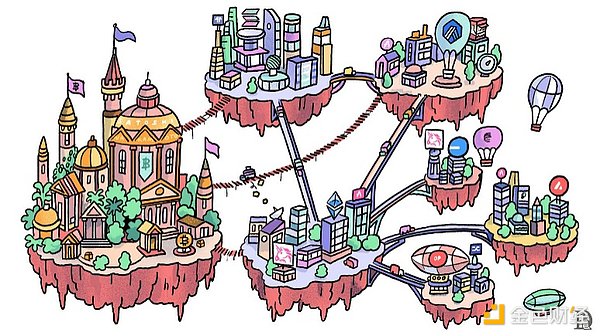
The concept of independent islands reminds me of my hometown, Mumbai. Once known as Bombay, it was originally made up of seven separate islands. The integration between these islands began in the 1680s and lasted for several centuries. Today, as I walk through the bustling streets of Mumbai, I see few traces of the former separations. The city feels seamlessly unified, and the divisions of the past are all but forgotten.
This transformation in Mumbai raises an interesting question: Will we see a similar evolution in the Bitcoin space? Some teams are working in this direction.

This article will describe how some teams are building different ways for Bitcoin users to use BTC, beyond just holding it. I will first explain why we need better infrastructure to lay the foundation, and then dive into the various approaches taken by teams aiming to expand BTC's use cases. Finally, I will mention that the ultimate vision is as much about social consensus as it is about technical consensus.
Everything is going on, and the team is building different auxiliary islands for Bitcoin Island and looking for solutions to modernize Bitcoin Island. Only if a social revolution breaks out among the islanders and they agree to change the rules, can Bitcoin Island be permanently reformed so that it can use the bridge to other islands as confidently as it uses the internal infrastructure of the island.
1. Why do we need better infrastructure?
Existing blockchains such as Ethereum, Solana, and even upcoming blockchains such as Monad are developed and built with developers in mind. They are built as platforms for developers to build applications. These chains provide a comprehensive ecosystem with a variety of learning resources, tools, frameworks, and features to support developers. Satoshi Nakamoto created Bitcoin casually, without a well-thought-out API or clear Bitcoin development learning documents.
There are three main reasons for continuously improving network infrastructure-better user experience, greater financialization, and large-scale payments.
(1) Better user experience will drive activity and bring more revenue
The Ordinals protocol is a way to utilize Bitcoin UTXO that looks at single Satoshis (the smallest unit of BTC) in a different way, which has led to innovations like inscriptions (NFTs on Bitcoin). Enthusiasm for ordinals and inscriptions has spawned the evolution of alternative standards such as BRC-20 and Runes. Inscriptions and Runes drive Bitcoin activity. For BTC transfers alone, total daily transaction volume has increased by 70%.
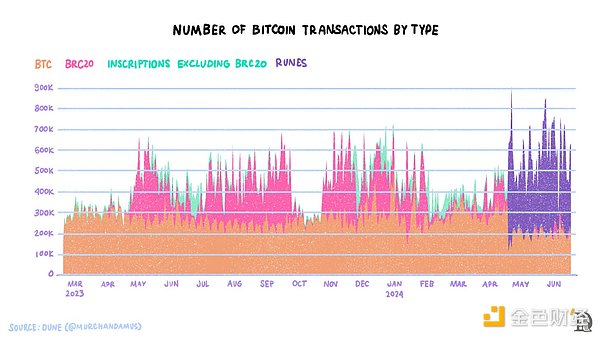
These new ways to trade Bitcoin have helped increase transaction fees by about 40%. However, these new methods often spark heated debate in the Bitcoin community. One school of thought believes that Bitcoin should focus only on enhancing its core functionality as a decentralized payment system. They believe that stepping outside of this range could undermine Bitcoin's security, simplicity, and effectiveness as a sound currency.
On the other hand, those who support a more flexible approach advocate expanding Bitcoin's functionality to include non-payment use cases. They believe that this evolution is necessary for Bitcoin to remain competitive and relevant in the rapidly evolving blockchain ecosystem.
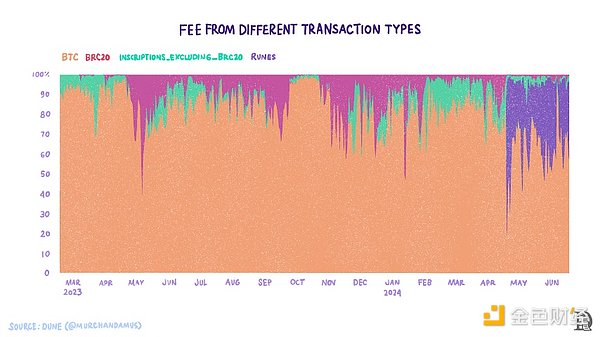
Is this enough? Not really. According to Token Terminal, Bitcoin miners have earned about $109 million in fees in the past 30 days. During the same period, applications such as Uniswap and Lido Finance have earned $90 million and $104 million in revenue, respectively. The most recent halving was in April 2024, and saw a 50% reduction in the block subsidy that miners receive. After the most recent halving event, the block reward (subsidy) was halved from 6.5 BTC per block to 3.125 BTC. This brings the total subsidy reduction for miners to 13,500 BTC per month (3.125*144*30). At $66,000 per BTC, that’s a total of $891 million, so monthly transaction fees only account for about 12% of the subsidy loss.
Recent developments (like runes) are encouraging, but we need more. What are the remaining challenges? Bitcoin’s user experience is nowhere near that of Solana or Ethereum L2s like Arbitrum. For Solana, swaps take seconds and cost less than a penny. However, if you want to trade runes on Bitcoin, you have to pay a few dollars in fees and wait for blocks to confirm your transaction.
In addition to this, when you buy runes, you must buy the full listed quantity. Buyers cannot modify the number of runes purchased. Another disadvantage is that runes cannot be exchanged for each other, just like we can exchange USDC for MKR on Ethereum. Traders must sell one rune in exchange for BTC and then buy another rune they want. The extra steps in the middle add unnecessary friction to the user experience.
The user experience of rune trading is far from ideal. There is no way to use BTC as collateral or lend it. Users must take BTC out of Bitcoin L1 and put it on other chains to use in financial applications.
(2) Increase the financialization of BTC
First, the market value of Bitcoin is close to 1.3 trillion US dollars (calculated at 1 BTC of 66,000 US dollars). Like gold, Bitcoin is an external currency, which means that governments cannot manipulate the supply of Bitcoin. While the exact size of the gold loan market is unknown, reports estimate it at $100 billion. Therefore, one of the most important reasons to build applications on Bitcoin is to use native BTC as collateral to borrow stablecoins. A strong lending market will allow Bitcoin holders to earn a yield on their BTC holdings.
Take staking as an example. Other native assets, such as ETH and SOL, have inherent staking uses in securing the network; approximately 27% of circulating ETH is staked in various staking protocols, with an annual yield of approximately 4%. Another approximately 4% of ETH is staked in re-staking protocols, and 67% of circulating SOL is staked. In addition, both ETH and SOL are widely used as collateral assets in their respective DeFi ecosystems.
Wrapped BTC (or WBTC) is the most widely used version of BTC in different DeFi ecosystems, with a market cap of approximately $10 billion, less than 1% of the total BTC in circulation. This shows the opportunity that exists in the financialization of BTC.
Assuming similar levels of Bitcoin are used for staking or DeFi as Ethereum, about 30%, the amount is $390 billion. For context: the total value locked in all DeFi in all other chains is $101 billion. BTC is potentially the most productive liquid asset. Right now, that potential is constrained by intentionally imposed technical limitations.
(3) Scaling BTC Payments
The Bitcoin base layer was not designed with throughput in mind. If Bitcoin must become the settlement layer of the internet, we need faster transactions. As Mohamed Fauda has said, there is a limit to the number of transactions that can be issued using this method. At the maximum block size of 4MB, Bitcoin can support 6.66 kbps (4MB/10 minutes).
The Bitcoin network is currently unable to handle high traffic. During anticipated events such as the minting of Quantum Cat and the release of runes, users will face a degraded experience. The poor user experience is not limited to those trying to mint inscriptions, but also includes those BTC senders and receivers.
The adoption of the Lightning Network (LN), the leading Bitcoin scaling network, is not promising. The capacity or liquidity of the network is about 5k BTC. This is the amount of BTC locked in all lightning channels. It affects the liquidity of the network, and the amount of BTC that can be transferred through the network.
Why is this important? Let's take an example to understand. Joel is raising $1 million to pay the wages of workers on coffee plantations in India, and he decides to use LN to receive donations. He can't just open his LN wallet to receive donations. He needs to have $1 million of inflows. Liquidity inflow refers to the amount of BTC locked in the channel by a counterparty. Sid is one of Joel's counterparties, and he has locked $10,000. Joel needs more counterparties like Sid, who has a total of $1 million locked, to accept donations worth $1 million. This poses a major challenge to network scaling, as inflowing liquidity is always limited by the opportunity cost of capital.
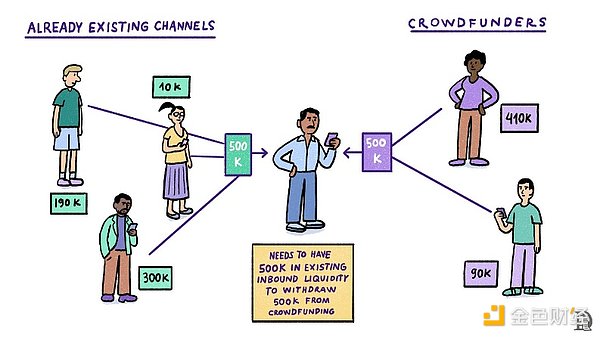
2. Challenges facing the development of Bitcoin
Bitcoin is both a technical phenomenon and a cultural or social phenomenon. Social consensus is the last line of defense. For example, the hard cap of 21 million can be modified through forked code to increase the distribution tail by 1%. But for this change to take effect, all miners must mine on this fork, which they are unlikely to do. This is because the hard-coded cap has always been one of the main value drivers of BTC. If this cap is broken, value loss may occur. Miners are unlikely to mine on a fork that may lose value.
Due to the lack of social consensus, the technical efforts required to change the code base will be useless. The last time Bitcoin had a contentious fork was during the Block Wars of 2017. The network split in two, with Bitcoin implementing Segregated Witness (SegWit) and Bitcoin Cash, which increased the block size. At the time, most miners chose the BTC camp.
For something to be considered a currency or a store of value, it must change infrequently. The main reason why fiat currencies lose purchasing power over time is that central banks often use their power to increase the supply. The unpredictability of unilateral central bank actions makes some currencies permanently weaker. Bitcoin culture resists change. Even something as non-controversial as Taproot took years to implement.
Implementing the above changes involves more than just changing Bitcoin. Bitcoin's base layer also needs to be as simple as possible. Simplicity is essential to reduce attack vectors and increase stability. The main goal is to perform complex operations like lending and minting stablecoins using BTC as collateral outside of base layers such as Ethereum L2.
3. Bitcoin L2?
What is L2? It should:
· Provide sufficient data for L1 to verify and resolve disputes (if any).
· No security assumptions outside the base layer.
· Allow users to unilaterally withdraw assets to the base layer or L1.
Since the current Bitcoin opcodes restrict it from verifying any proof, these conditions cannot be met. Therefore, all chains claiming to be Bitcoin L2 cannot be called L2.
Another aspect of L2 is to examine the security assumptions of this layer with reference to the security assumptions of Bitcoin. Every blockchain has security assumptions, such as: · Most mining nodes are honest. · Nodes can independently validate blocks and reject invalid blocks. · Forks are resolved to the longest branch of the supporting chain, and so on. The second layer (L2) should not extend the set of security assumptions of the base layer it is based on. For example, if the second layer has a centralized sorter that monopolizes block production, users need to be able to compete for block production at a tiny cost. L1 should be able to command L2 to release users' funds as long as they have not been spent. For this stage, there are no such mechanisms even in Ethereum L2. Even consensus Ethereum L2 like Arbitrum is not a true L2 if we strictly follow the L2 characteristics mentioned above. Since the current set of Bitcoin opcodes prevents it from verifying any proof, any chain claiming to be Bitcoin L2 cannot be called L2. The Lightning Network may be the only solution that meets the definition of L2. This article uniformly refers to these solutions as the Bitcoin extension layer.
4. The pros and cons of the Bitcoin extension layer
Broadly speaking, there are two components to using BTC: 1) using a bridge, because there are not many available on Bitcoin; 2) creating an environment or a chain that allows investors to use BTC applications to run on it.
In order to promote more use cases and larger scale, new layers may make security assumptions on top of Bitcoin. Users who want to use their own BTC will want to make the lowest possible trade-offs in terms of security. Ethereum's expansion roadmap is a good reference to understand how Ethereum's expansion design space has evolved.
A few years later, Ethereum realized that rollup would be its expansion option. At this stage, we still don’t know which approach is the best way to scale and make Bitcoin more programmable.
Whether storing data or choosing a bridge design, projects have to make trade-offs between decentralization, security, speed, and user experience. The answers to the following questions constitute the design space for projects or companies building Bitcoin extension layers:
· How do they implement the bridge from Bitcoin to the new chain?
· How do they store data (data availability)?
· How do they use Bitcoin L1 for settlement?
· Do they expect to change the Bitcoin base layer to achieve their full vision?
· What execution environment do they choose?
·Does the Bitcoin extension layer promote the use of BTC in areas such as gas and staking?
Different teams are making different trade-offs to provide better functionality and scale for BTC holders.
5. Bridging
BTC on Bitcoin cannot be transferred to other chains. Some infrastructure is needed to bring BTC to other chains. The typical bridge mechanism locks the user's BTC on Bitcoin and mints an equal amount of synthetic tokens representing BTC on the target chain.
What is the typical locking mechanism? This means that users who want to transfer BTC from Bitcoin to any other chain send it to a specific address on Bitcoin. The bridge operator controls this address. When the bridge operator detects incoming BTC, they mint an equivalent synthetic token representing that BTC and send it to the address specified by the user on the target chain.
The risk here is that if the bridge operator loses BTC on Bitcoin, then the tokens minted on the target chain will become worthless. We saw this risk firsthand after the FTX collapse. SolBTC was a wrapped version of BTC operated by FTX/Alameda. It became worthless because FTX did not honor its redemption promise after filing for bankruptcy.
Therefore, everything the user does on the target chain is completely dependent on the security practices of the bridge operator on Bitcoin to control the user's BTC. How the user's BTC is controlled determines different types of bridges. There are three types of designs currently in production.
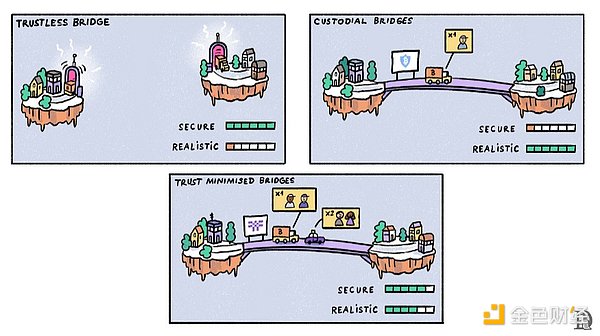
(1) Trustless Bridges
These bridges are only possible if L1 can verify the proofs submitted by L2. In the case of Bitcoin, this is impossible because it cannot understand anything happening externally.
(2) Trust-Minimized Bridges Rely on Economic Security
The next best option for BTC bridges is to have multiple public parties handle peg-in and peg-out. These parties secure users’ BTC on Bitcoin and mint/burn synthetic BTC tokens on other chains. One implementation is Threshold Network’s tBTC, which works for an “honest majority”.
This means that before an operator can perform any action on a user's BTC, a consensus is required from a majority of operators running Threshold Network nodes. tBTC has no centralized intermediary, but rather randomly selects a group of operators running nodes on the Threshold Network to protect the security of users' deposited BTC.
Who can become a node operator for the Threshold Network? The network has a governance token, T, and while T is used for governance, at least 40,000 T are required to become a node operator. As of June 25, 2024, there are 139 active nodes on the network.
The tBTC Beta staker program aims to gradually decentralize the node network. Beta stakers can delegate their stakes among five professional node operators - Boar, DELIGHT, InfStones, P2P, and Staked. Beta stakers are expected to actively participate in node operations for at least 12 months. For example, they need to be highly responsive to network upgrades, ideally upgrading their nodes within 24 hours of receiving a notification.
Whenever a user requests to mint tBTC, a new Bitcoin deposit address is generated. This address is private to that user and is controlled by a node on the Threshold Network. Users can request to mint tBTC on networks such as Ethereum, Arbitrum, Optimism, Mezo, and Solana.
They need to provide two addresses - one is Bitcoin's recovery address (this is the address to which their Bitcoin will be returned if there is a problem during the mining process), and the other is the target chain address where they want to receive tBTC. Once the request is made, the user must deposit BTC into the generated address and wait for the guardian to confirm their deposit. Once confirmed, the miner will send tBTC to the user's address on the target chain.
The network has about 3,500 Bitcoins, or more than $200 million in locked value.
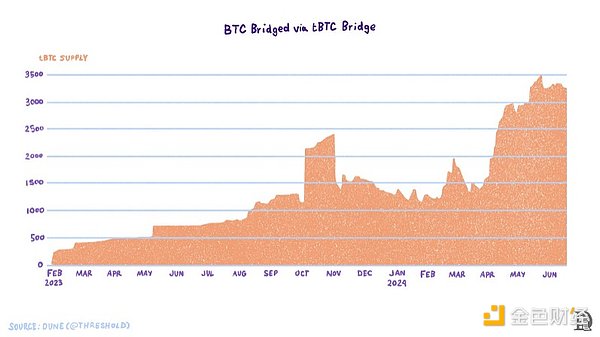
Given the functionality of Bitcoin opcodes, trust-minimized bridging can be said to be the best bridge implementation currently. The implementation of trust-minimized bridging depends on how the multi-signature is designed. Threshold Network's tBTC, Stack's upcoming sBTC deployment, and Botanix's spiderchain are all examples of trust-minimized bridging.
(3) Custodial bridging
In this design model, a centralized provider locks the user's BTC on Bitcoin to a Bitcoin address maintained by a custodian. BitGo's WBTC is the most widely used BTC to other chain bridges. More than 150k BTC are bridged using WBTC. The current distribution of WBTC is shown below.
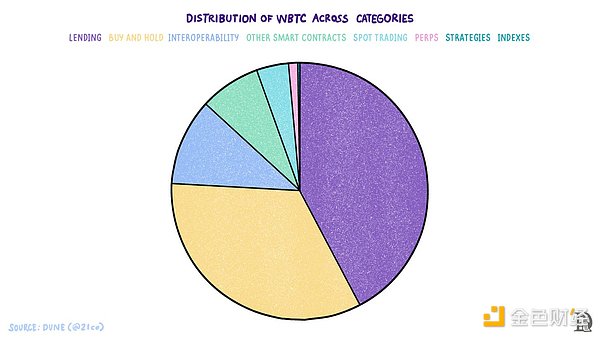
(4)BitVM
While these three types of bridges are already online, Robin Linus released the BitVM white paper at the end of 2023. BitVM proposes a new way to express Turing-complete smart contracts on Bitcoin. If a machine or a system can perform any calculation in a sufficient amount of time, we say it is Turing-complete. As mentioned earlier, Bitcoin is not Turing-complete by design, and BitVM proposes a way to solve this without changing existing opcodes. It also proposes a bridge mechanism that is said to be trustless.
The core idea of BitVM is to optimistically verify ZK (zero-knowledge) proofs on Bitcoin. As long as there are no objections to the execution of a transaction, it is assumed to be correct. The system generally operates with the assumption that there is at least one honest validator. That is, if the execution is incorrect, there should be at least one honest validator who challenges it.
So, as long as the ZK proof is not challenged, everything is fine. If there is a dispute, the challenger and the prover enter a challenge-response game on the chain, and the consequence is an increase in the on-chain transaction load.
Liquidity management is another major flaw in early versions of BitVM. When users withdraw funds from the bridge, the system completes a partial withdrawal and the bridge operator must face liquidity. The operator is later compensated by the bridge. As the amount of funds locked in the bridge increases, the operator must maintain more liquidity to honor withdrawals. This puts pressure on the operator and makes the design extremely capital inefficient.
Assume that, on average, the operator needs to keep 10% of the bridge TVL as liquid funds at all times. If the TVL of the bridge is $10 billion, the operator needs to maintain $1 billion in liquidity at all times. As the bridge attracts more liquidity, the operator needs to have more BTC inventory on hand.
6. Execution Layer
The next piece of the puzzle in making BTC useful is the design of the chain to promote the use of BTC with the best possible user experience. Developers need to consider multiple factors when designing a chain.
· Execution environment - should it be an Ethereum Virtual Machine (EVM) compatible chain?
Compatibility with the EVM has its advantages, such as tools that developers can use for several years, such as wallets and bridges to other EVM chains; in addition, there is a familiar UX for users.
Ethereum's L2 has benefited from EVM compatibility. EVM-compatible L2s like Arbitrum and Optimism can quickly gather users and applications that are already on Ethereum. In contrast, L2s that are not EVM-compatible, such as Starknet, have difficulty gaining adoption.
However, the EVM also has its drawbacks. Since the EVM executes transactions in a serial manner, parallel processing is not possible. However, newer execution environments, such as the Solana Virtual Machine (SVM) and the upcoming Monad, support parallel processing.
· Data availability - Similar to Ethereum, rollup solutions have emerged in the Bitcoin space. Rollups come in many forms depending on how and where the data is stored. Some store state differences (the difference between two states of the chain after executing a batch of transactions) and validity proofs on L1, some store compressed transaction data on L1, and some store only validity proofs on L1 and transaction data on other layers.
Chains like Stacks use Bitcoin as a checkpointing mechanism. The block time on Stacks is much shorter than Bitcoin. Stacks publishes the block data between two Bitcoin blocks to each Bitcoin block.
The execution layer can publish transaction data in the form of inscriptions on Bitcoin. Recall the days of the Bitcoin network's 6.66 kbps bandwidth. If a compressed file is 10 bytes in size, a Bitcoin block can theoretically contain up to about 600 compressed transactions. However, this maximum is almost impossible, as 4 MB blocks are a rare phenomenon, and even rarer is it that the entire 4 MB space is available for inscriptions.
The block size depends on the combination of SegWit and non-SegWit transactions. SegWit, short for Segregated Witness, separates or isolates transaction data from witness data. The idea is that not everything stored in a block has the same value. Instead of limiting the block size to the traditional 1 MB, SegWit proposes a new limit of 4 million weight units. So if a block contains all non-SegWit transactions, the limit will be 1MB. But if it contains all SegWit transactions, it may be a 4MB block.
Several teams are building layers on top of Bitcoin to take advantage of BTC’s massive liquidity. In this article, we examine six teams, all of which have different tradeoffs and very interesting designs. We will briefly describe how they work, their stages of development, and the traction they have achieved to date.
(1) Babylon
Babylon focuses on expanding the use of BTC as a collateral asset. It brings a different approach than other Bitcoin layers (so-called L2s) in the form of remote staking of BTC. This means that instead of locking BTC on Bitcoin in order to mint synthetic versions on a different layer, Babylon introduces the following mechanism:
· Users lock their BTC in a self-custodial vault by creating a UTXO that can only be spent once, which can be spent after a pre-specified time (the staking period) has passed, or when the user burns their staked UTXO via special EOTS (extractable one-time signatures).
· After confirming the pledge transaction, users can use their EOTS to verify the blocks on the PoS chain in the Cosmos ecosystem to earn income.
· If the user behaves honestly, they can unlock their BTC at the end of the pledge period, or submit an unbinding transaction to Bitcoin.
· If dishonesty is detected, the user's EOTS will be disclosed to the public. How to detect this? Babylon's vigilantes ensure that there is at least one honest operator. It is a program suite that acts as a data relayer between Bitcoin and Babylon. The submitter submits Babylon checkpoints to Bitcoin using OP_RETURN. The Reporter program scans the Babylon checkpoints and reports them to Babylon. If an anomaly is detected, anyone (slasher) can submit a Bitcoin transaction using the public EOTS key to claim the malicious user's pledge.
· An obvious question is, why can't users use their keys to get their stake back themselves? The answer may be that when miners see this transaction, they will choose the transaction with a higher fee if someone else has initiated the same transaction. For example, if the stake in question is 5 BTC, the slasher can still make a profit even if he shares 4.99 BTC with the miner. In this case, most of the profit goes to the miner, not the slasher. However, the malicious user loses most of their stake, either to the slasher or to the miner.
While Babylon provides an interesting way to expand the use of BTC, its mechanism is quite complex. For example, slashers have not been successfully deployed on many PoS chains, although some have been around for years. In addition, although Babylon can utilize remote staking so that BTC can be used to secure other PoS chains, it requires bridges to support other BTC use cases, such as lending.
(2)Build on Bitcoin (BOB)
Ironically, Build on Bitcoin (BOB) is an Optimism-based rollup that is still settled on Ethereum as of June 2024. It claims to be an Ethereum L2 aligned with Bitcoin. BOB will be launched in four phases:
· Phase 1 - OP stack rollup. In this phase, it is purely an Ethereum rollup. Fraud proofs are not yet available on the mainnet. Fraud proofs are a mechanism that allows anyone to question the validity of transactions included in the rollup transaction package.
· Phase 2 - Ethereum rollup with Bitcoin security. In this phase, BOB will utilize Bitcoin's merged mining. Merged mining allows miners to secure or mine multiple chains together with the Bitcoin network.
· Phase 3 - optimistic Bitcoin rollup via BitVM. BitVM is not yet online. After improving the current version, BOB will start using BitVM for settlement on Bitcoin.
· Phase 4 - ZK rollup on Bitcoin. After Bitcoin accepts opcodes that allow it to verify ZK proofs, BOB will use ZK proofs for settlement on Bitcoin.
As of June 17, 2024, BOB has about $60 million in TVL, of which Sovryn DEX contributed about $20 million.
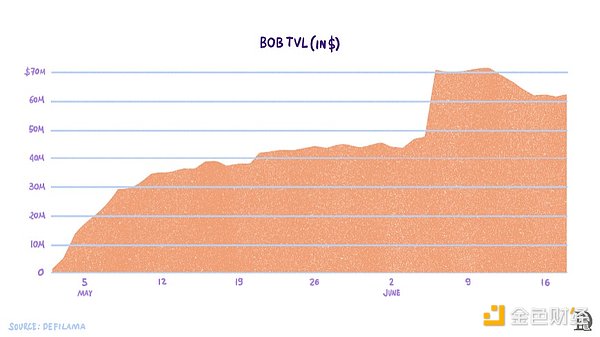
(3)Botanix
The Botanix team has brought a major innovation: Spiderchain. What is Spiderchain? It is a rolling multi-signature of the coordination node on Botanix. Let's analyze it in detail. As we mentioned earlier, L2 requires a bridge and a chain to execute transactions. The coordination node keeps the user's funds securely on Bitcoin and mints and burns synthetic BTC (on the EVM layer) for the user. Orchestrators run Bitcoin and Spiderchain EVM (Botanix) nodes.
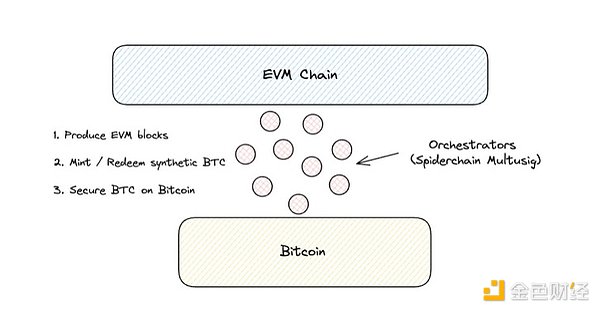
Assume there are N coordinating nodes on the network. For each Bitcoin block, M (
Botanix's chain is compatible with EVM and is secured by the PoS consensus mechanism. In addition to securing BTC on Bitcoin by participating in the rolling multi-signature network and facilitating the minting and redemption of synthetic BTC, the coordinators also participate in the block construction of the EVM chain. They publish the root hash (a compressed version of the Botanix EVM transaction) as an inscription on Bitcoin.
Readers must note that simply publishing Bitcoin data does not mean settlement. The difference is that the data published in the form of inscriptions by external chains like Botanix is stored in a place that is not verified by Bitcoin nodes (miners). The Bitcoin protocol is completely unaware of the existence of this data. Therefore, it is impossible to determine whether the transaction data published in the inscription is correct.
As of June 2024, Botanix EVM and Spiderchain are in the testnet stage.
(4) Citrea
Citrea is developing a ZK rollup on Bitcoin. What does "on Bitcoin" mean? It means that it intends to use Bitcoin as a data availability layer. The company says the most secure and incentive-aligned way to scale the Bitcoin blockchain is to shard execution with on-chain verifiability and data. Sharding execution means breaking execution into smaller pieces. Citrea then aggregates the shards, or bundles of transactions, and publishes the difference in state between the two bundles on Bitcoin, along with a proof called a proof of validity. The problem is, Bitcoin doesn’t have the ability to verify any proofs yet. Citrea’s final form will have to wait until Bitcoin has opcodes that allow it to verify ZK proofs. In the meantime, it will use the BitVM implementation as a temporary solution for proofs and bridge BTC in and out of rollups. Of course, Citrea inherits the shortcomings of BitVM mentioned in the previous content. In the future, as BitVM improves, Citrea will improve its bridging capabilities.
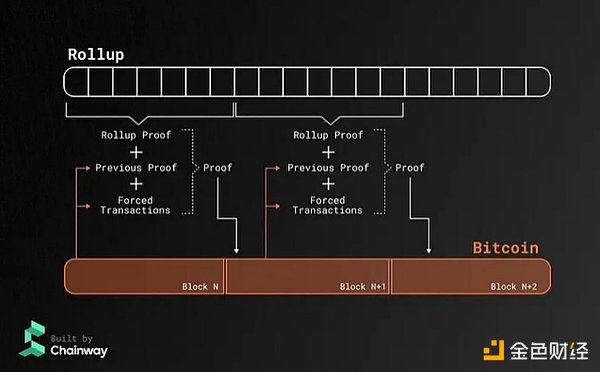
As of June 2024, Citrea is still in the testnet stage.
(5)Mezo
Mezo bills itself as the economic layer of Bitcoin and does not call itself Bitcoin L2. It uses Threshold Network's tBTC bridge to bring BTC in and out of the EVM chain - Mezo.
Mezo's development team has developed products such as tBTC, Fold, Keep, and Taho. The team has been developing applications around Bitcoin for many years. Mezo's goal is simple: to expand BTC's use cases. It uses three mechanisms: · Let Mezo users earn yield by staking BTC to secure the network. · Let users pay gas fees with BTC and distribute it to veBTC and veMEZO stakers. · Build an end-to-end BitcoinFi experience. What exactly does BitcoinFi and the economic layer mean? Most new chains, including EVM chains, rely on the existing user experience - the same wallets, bridge schemes, and so on. Updating the user experience is almost never a priority. Mezo curated the entire user experience from scratch, which is something I rarely see. It includes: · A native stablecoin (mUSD) backed by BTC, so users don't have to bridge BTC from other chains.
· A long-tail lending protocol secured by BTC.
· A fully integrated on- and off-ramp (compatible with Fold).
· Integrated wallet experience (compatible with Taho).
Combining all of these applications creates a unique end-to-end BitcoinFi experience:
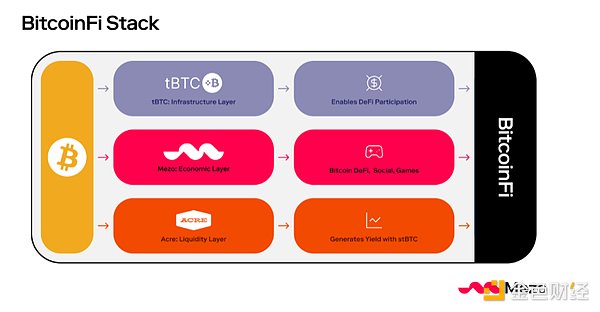
Mezo is based on the Cosmos SDK and uses Comet BFT for consensus.
CometBFT is software for safely and consistently replicating applications across multiple machines. By "safe", we mean that CometBFT can still work when no more than 1/3 of the machines fail in any way. By "consistent", we mean that every fault-free machine sees the same transaction log and computes the same state. Safe and consistent replication is a fundamental problem in distributed systems; it plays a key role in fault tolerance for a wide range of applications from currency to elections to infrastructure orchestration. ——Source: CometBTF Documentation
It consists of two components - a consensus engine and a common application interface. Based on the Tendermint core, the consensus engine is responsible for the generation, verification, and finality of blocks. Tendermint is one of the earliest proof-of-stake consensus designs. It provides Byzantine Fault Tolerant (BFT) consensus and can accommodate up to one-third of malicious nodes.
The application interface - the Application Blockchain Interface (ABCI) - decouples the consensus engine from the application. A major advantage of the ABCI is that since consensus and applications are decoupled, developers do not need to use the same language used to build the consensus engine to build applications.
The interface acts as a medium for passing transactions to applications for execution. This functionality makes the system more modular and helps focus more application developers. Initially, Mezo will only be compatible with the EVM runtime.
The economic design of Mezo is such that as it grows in popularity, Bitcoin holders may benefit directly or indirectly. They can hold BTC on Mezo and receive staking benefits, or, if they choose to continue holding BTC, they will receive some benefits by taking BTC out of circulation (to pay Mezo's fees).
Mezo has a dual staking model, as shown in the figure below. Validators on the network can stake BTC and MEZO (the native token of the MEZO network). By staking BTC and MEZO, validators receive veBTC and veMezo respectively. "ve" stands for validator escrowed, and these tokens are usually locked in smart contracts. Validator escrowed token holders have governance rights, and network rewards and fee income are shared with them.
The longer the assets are locked, the more ve tokens are issued. veBTC stakers receive BTC, and veMEZO stakers receive MEZO rewards. Part of the MEZO rewards can be burned to increase BTC funds.
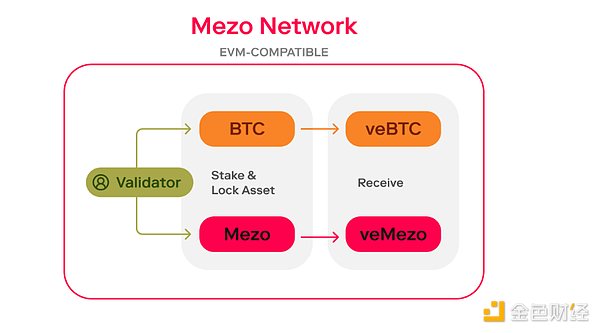
Yield is one of Mezo's core products, as the fees paid by users are paid to the validators who staked BTC. Mezo will further expand the scope of BTC staking by providing liquid staking with Mezo's sister project Acre. When users deposit BTC into Acre, they will receive a liquid staking token stBTC in return. BTC storage can be applied across chains and used in various DeFi applications. The income generated through these activities is accumulated in the form of stBTC, which is exchanged with BTC at a 1:1 ratio.
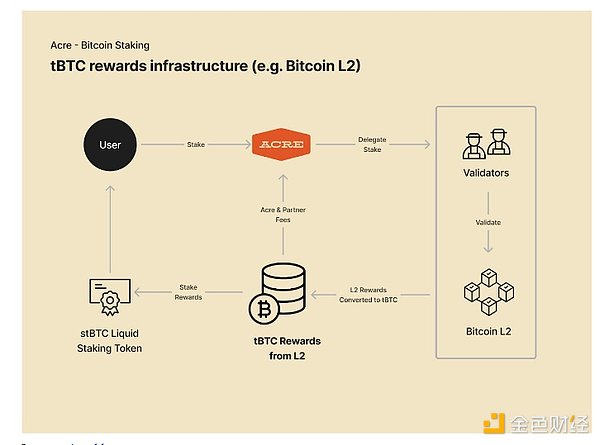
BTC, with a market value of over one trillion US dollars, has not even scratched the surface of the lending market. The distribution of WBTC in the lending market is shown in the figure below. It shows that between July 2023 and June 2024, the amount of WBTC used in the top three lending applications dropped from about 50k to about 23k. The decline in the total amount of WBTC in lending applications can be attributed to a 48% drop in the supply of WBTC, from 285,000 WBTC in May 2022 to just over 150,000 WBTC today. This decline is mainly due to the market's awareness of the risks posed by centralized parties after Luna, 3AC, and Alameda.
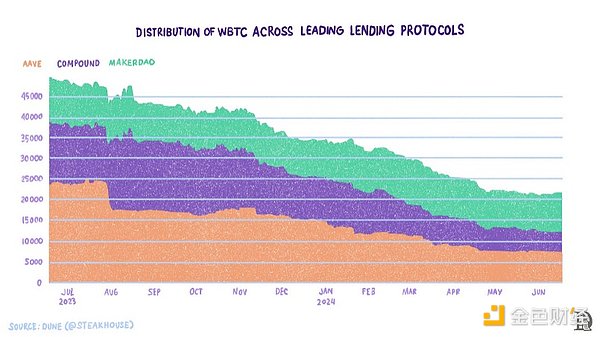
In the first phase of the launch, Mezo has begun accepting BTC deposits with three lock-up periods: two months, six months, and nine months. Deposits accumulate points in the form of HODL points. One BTC generates 1,000 points per day, and the multiplier is related to the lock-up period. The longer the lock-up period, the higher the multiplier. Users can also deposit other assets such as USDe, USDC, and USDT to boost their BTC deposits. As of July 2024, Mezo's TVL is $135 million.
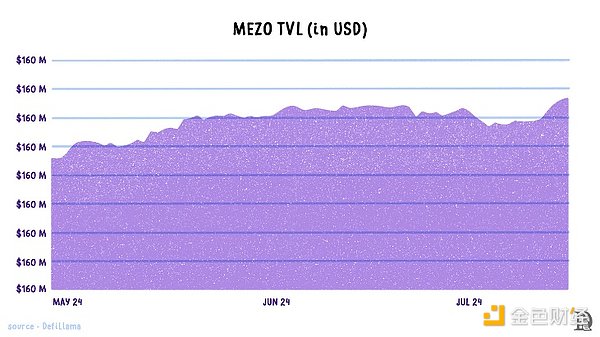
In addition to rewarding holders, Mezo will also share part of the fees with the Bitcoin Core protocol.
(6)Stacks
Stacks (formerly known as Blockstack) recently launched the long-awaited Nakamoto upgrade, which aims to solve problems such as constant forks and slow transactions before the upgrade. Stacks works based on the Proof of Transfer (PoX) consensus.
Therefore, Bitcoin miners interested in producing blocks on Stacks need to send some BTC. A miner, such as Alice, is randomly selected to produce blocks on Stacks. BTC from that miner is given to those who lock/hold STX, the native token of the Stacks chain. This is interesting because, although the reward is small, it is BTC. On most chains, the reward is only provided using the chain's native token.
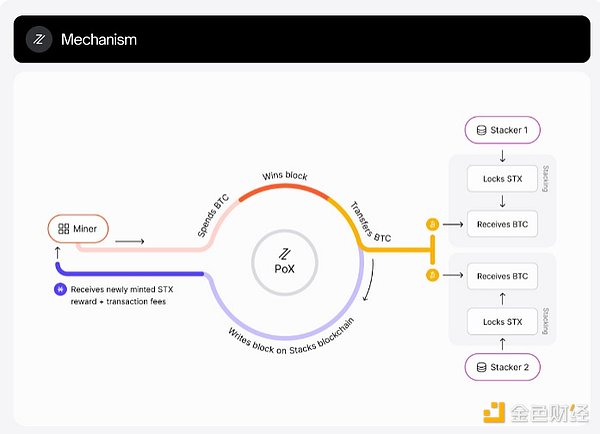
Once selected, Alice can produce Stacks blocks until the end of the Tenre (next Bitcoin block). Miners generate Stacks blocks and share them with signers for verification. Once more than 70% of signers receive the Stacks block, it is accepted by the Stacks network. We assume Alice generates 10 Stacks blocks before the next Bitcoin block is mined, and Bob wins the term to produce Stacks blocks afterwards.
Bob takes the hash of the first Stacks block Alice generated on Stacks and adds it to his block submission transaction for inclusion in the Bitcoin chain. Stackers detect this transaction. They include a term change transaction on Stacks that contains the hash of the last block Alice generated on Stacks, in this case block #10. This way, Bob understands that he must create on the block before Alice (#10).
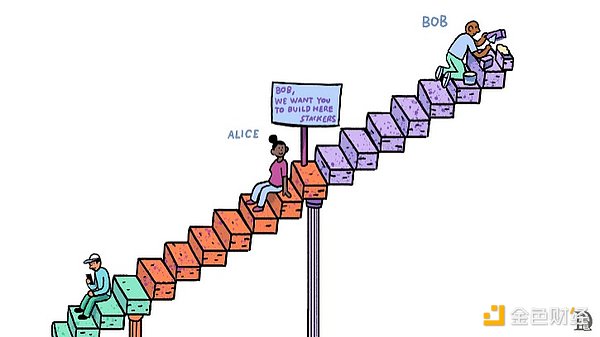
Although the development of the Bitcoin layer is still in its early stages, a comparison of the above chains is made here, considering chain design, bridge design, and the protection of the value of the US dollar.
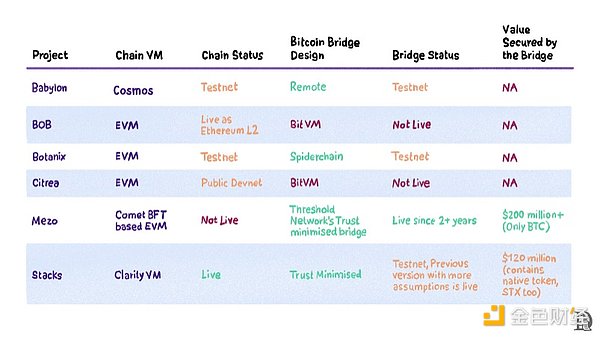
We must mention that in addition to the teams mentioned above, there are many other teams (such as Alpen, Bison, BitLayer, Rootstock, SatoshiVM, and Soveryn) who are building Bitcoin's extension layer.
7. The relationship between L2 and L1
L2 is beneficial to L1 in two ways: scale and cost. They provide users with a cheaper way to trade without sacrificing too much security (or any security in the case of non-custodial, trustless bridging, and L2 without additional security assumptions).
Take Ethereum L2 as an example. According to Token Terminal, in the second week of June 2024, Ethereum supported 7.1 million transactions and generated $10.6 million in revenue. The cost per transaction for users was about $1.5. At the same time, five L2 platforms, Arbitrum, Base, Blast, Optimism, and Polygon, supported more than 70 million transactions at a cost of $2.75 million. Each transaction fee is $0.03.
We can argue about the quality of transactions (including whether they are robot transactions) or the value of transactions, etc. However, the fact is that Ethereum cannot support that many transactions.
But there is a downside in that L1s are no longer directly connected to their customers or users. In the traditional world, it is the business closer to the end user that usually captures most of the value. Amazon is a good example. Its massive distribution network gives it an upper hand over suppliers and manufacturers.
Dollar Shave Club disrupted the razor industry by breaking the traditional retail channel and selling directly to consumers through a subscription model. This allows them to implement lower product pricing while retaining most of the value, rather than sharing it with the entire supply chain.
Adding another layer between you and your customers is generally not a good idea. Why would L1 go this route? L1s are not losing customers by bringing L2s in. They are bringing B2B to a once-rigorous B2C business model. But there may still be a question - are L2s capturing most of the value? Are they passing enough fees to L1s?
Fortunately, Ethereum has been on this path for the past three years, and we can observe the impact of L2 on Ethereum's value capture. There are two ways to understand whether L2 is a predator of the Ethereum ecosystem.
· The first way is to see whether Ethereum will lose revenue because of L2. We can test this by studying the changes in Ethereum's revenue share in Ethereum's ecological revenue. The following figure is about the revenue of Ethereum and the five leading L2s. Ethereum has always accounted for more than 90% of the revenue flow.
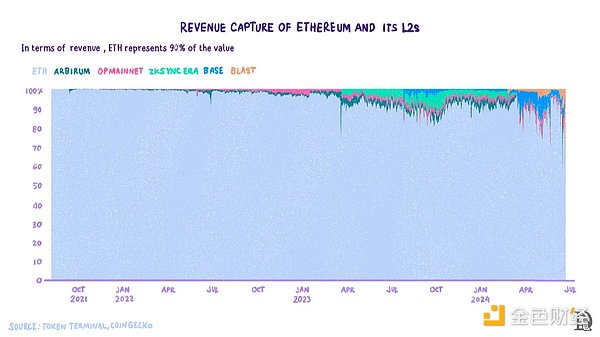
· Another way is to look at market capitalization or price. Since value capture is almost always reflected in price, ETH accounts for more than 95% of the total market value of the Ethereum ecosystem compared to the top 10 L2s by market value.
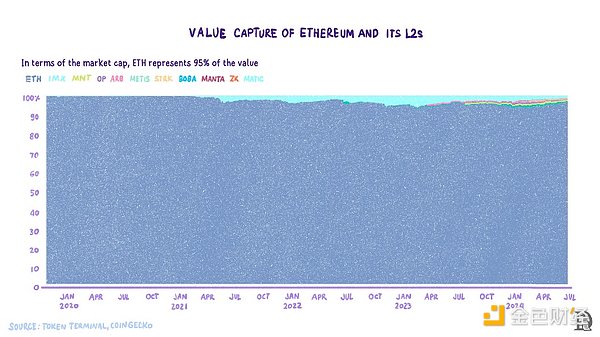
Ethereum cannot support so many transactions, but it still accounts for more than 90% of the ecosystem value, which shows that L2 is the right measure to scale Ethereum. As long as L2 is based on L1, healthy competition between L2 for L1 block space will indicate the healthy development of the base layer.
8. What will happen next?
Think about the island metaphor again. When it comes to real L2, the two islands must cooperate to build a bridge. But this can't be achieved without internal consensus among Bitcoin Islanders. What's happening now is that those who want to be Bitcoin Island L2 islands are trying to make sure that the infrastructure is a stopgap measure.
So once Bitcoin Islanders agree that they need to connect with other islands to grow, L2 islands are there. Until then, it's important not to try to find more complicated ways to bridge or create L2, but to focus on using what already works and using battle-tested infrastructure.

Everyone knows how Bitcoin Islanders are set in their ways and how they take security extremely seriously. Any changes made to the island have been discussed exhaustively and thoroughly. Anyone who wants to propose a change to Bitcoin can draft a Bitcoin Improvement Proposal (BIP). After informal discussions on various forums, the authors incorporate feedback and make changes to the BIP. The Islander Committee then provides the BIP with a date, which is when it is officially confirmed.
Some Islanders understand the need to carefully and cautiously modernize Bitcoin Island. Teams such as Botanix, Taproot Wizards, and Thesis are laying the foundation for adding opcodes to expand Bitcoin's programmability. BIP-420 (also known as OP_CAT) proposed by Ethan Heilman and Armin Sabouri will bring a lot of exciting possibilities to Bitcoin. CAT is an opcode that was part of the original Bitcoin opcodes but was modified by Satoshi Nakamoto due to security issues, which have now been alleviated as the Bitcoin execution environment has evolved over the years.
Opcodes allow two pieces of data to be joined together. It unlocks many possibilities from custom transaction types (such as dynamic escrow systems, smart contracts such as atomic transactions), various DeFi applications, and greater interoperability with external chains.
Teams like Starkware have pointed out that OP_CAT can bring STARK verification to Bitcoin. This means that Bitcoin can verify ZK proofs, thereby supporting rollups. This design paradigm not only allows for general design on Bitcoin, but also improves the scalability that Bitcoin desperately needs.
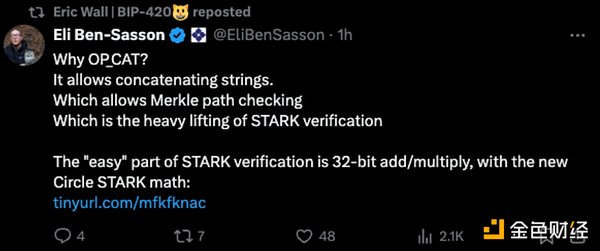
Other designs from the Taproot Wizards team, such as CATVM, have been put into development. This design will use OP_CAT to create a trustless bridge. Unlike the current BitVM design, CATVM has no liquidity requirements. CATVM will enable decentralized trading of ordinals and runes, and its user experience is as good as other chains.
Segwit paved the way for Taproot, which in turn is essential to Ordinals. Ordinals and inscriptions make BRC-20 and Runes possible. Recent enthusiasm among Bitcoin developers shows that there is growing support for social consensus on BIP-420. It will also be backwards compatible, so the network will not need a hard fork to activate it. We are excited for it to go live and for us to witness a new era of true Bitcoin-native programmability.
After a long time, developer interest in Bitcoin has surged. All the independent projects building around Bitcoin are like small modern islands surrounding the mighty Bitcoin island. With BIP-420, we may well have a way to fuse these islands together into one thriving modern island.
With so many changes happening to Bitcoin, I hope that in the future we will be able to use BTC in different financial applications with little knowledge of its underlying infrastructure. The integration of the Bitcoin layer is as natural as the way we feel when we travel through Mumbai today, completely unaware that this bustling metropolis was once seven separate islands of Bombay.
 Kikyo
Kikyo
































